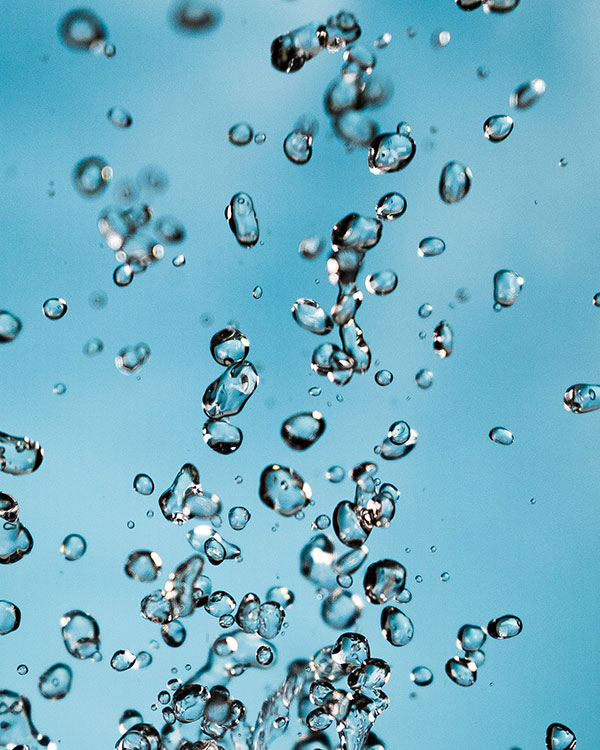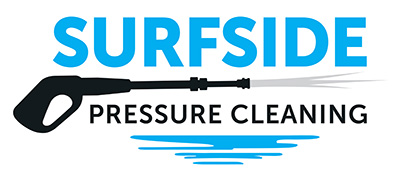Choosing the Right Pressure Washer
Choosing the Right Pressure Washer: A Comprehensive Guide to Pressure Washing Services
Selecting the Right Pressure Washer: Why It Matters
The art of effective pressure washing relies heavily on the equipment in use. Choosing the right pressure washer is more than just a matter of power; it’s about precision, efficiency, and sustainability. A task-appropriate washer ensures that surfaces are cleaned thoroughly without damage, making the process economical in terms of time, water, and energy consumption. Furthermore, with the myriad of pressure washers available in the market, each designed for specific applications, selecting the correct one can spell the difference between a job well done and potential surface damage. Whether you’re cleaning a delicate wooden deck, robust concrete driveway, or grimy industrial equipment, the importance of matching the task to the washer cannot be overstated. In essence, the right equipment is instrumental in achieving the desired results while preserving the integrity of the surfaces you’re cleaning.

The Basics of Pressure Washing
Importance of Pressure Washing in Maintaining Surfaces:
Pressure washing is not merely about aesthetics; it plays a crucial role in maintaining and prolonging the lifespan of various surfaces. Regular cleaning helps prevent decay, wear, and the proliferation of harmful microbes.
- Roof Cleaning: Over time, roofs can become breeding grounds for moss, algae, and fungi. If not addressed, these organisms can degrade roofing materials. Regular pressure washing keeps roofs looking fresh and extends their lifespan.
- House Washing: Beyond giving your home a clean look, pressure washing your house’s exterior can prevent the buildup of mould and mildew, which can lead to health issues if left unchecked.
- Concrete Cleaning and Driveway Washing: Driveways and pathways are constantly exposed to the elements, leading to the accumulation of grime, and other contaminants. Pressure washing ensures these surfaces remain safe and visually appealing.
- Solar Cleaning: For solar panels to operate at optimal efficiency, they must be free of dust and other residues. A gentle pressure wash ensures they capture as much sunlight as possible.
- Gutter Cleaning: Clogged gutters can lead to water damage in your home. Pressure washing removes the debris, ensuring water flows freely and away from your property’s foundation.
- Carpark Pressure Washing: Clean carparks are not only more visually appealing but also safer. Regular pressure washing can remove oil spills and other hazards that might pose slip risks.
Through these diverse applications, pressure washing emerges as an indispensable tool in property maintenance, ensuring both the beauty and functionality of various surfaces are preserved.
Types of Pressure Washers
Pressure washing has revolutionised the way we tackle grime, dirt, and various outdoor cleaning tasks, and at the heart of this method is the pressure washer itself. The type of pressure washer you choose depends on the specific job at hand. From electric to gas, diesel, hydraulic, and ultra-high pressure models, each type has its unique specifications tailored to different tasks. Electric pressure washers, for instance, are quieter and suitable for residential cleaning, while gas variants offer more power, ideal for commercial use. Diesel and hydraulic versions cater to industrial-grade cleaning, and ultra-high pressure washers tackle specialised tasks with unparalleled power. Choosing the right type ensures efficiency and the best cleaning results for every scenario.
Electric Pressure Washers
Overview and Specifications
Electric pressure washers are powered by an electric motor. They are typically lightweight, making them easy to manoeuvre and store. Most models have a PSI (Pounds per Square Inch) range of 1,300 to 1,700, making them less powerful than their gas counterparts.
Ideal Use Cases and Benefits
These washers are best suited for lighter tasks such as cleaning cars, patio furniture, and grills. Their quiet operation, combined with the absence of exhaust emissions, makes them environmentally friendly and ideal for residential use.
Gas Pressure Washers
Overview and Specifications
Gas pressure washers run on gasoline and are more powerful than electric models, usually offering 2,000 to 3,000 PSI. They can deliver higher water pressure, perfect for removing tough grime.
Ideal Use Cases and Benefits
Given their power, gas pressure washers are best for more intensive cleaning tasks, including deep cleaning of concrete, deck stripping, and preparation of surfaces for paint. Their mobility, not being tied to a power cord, makes them versatile for larger properties.
Diesel Pressure Washers
Overview and Specifications
Diesel pressure washers are robust, often utilised in industrial settings. They deliver high power output and are typically more durable than their gas and electric counterparts.
Ideal Use Cases and Benefits
These washers are suitable for heavy-duty tasks in industrial and agricultural environments. Their strength and durability make them ideal for frequent, intensive cleanings.
Hydraulic Pressure Washers
Overview and Specifications
Hydraulic pressure washers are designed to be compact and lightweight. They use hydraulic pressure, typically from a tractor or other machinery, to power the washer without a separate engine or motor.
Ideal Use Cases and Benefits
Because of their small size and lack of an independent engine, these washers are best for remote locations or places with limited access to electricity. Their design also makes them particularly quiet, reducing noise pollution in tranquil settings.
Ultra-High Pressure Washers
Overview and Specifications
As the name suggests, ultra-high pressure washers deliver extremely high pressure, often exceeding 25,000 PSI. They are designed for specialised tasks and are commonly used in industrial settings.
Ideal Use Cases and Benefits
These washers are utilised for tasks like concrete cutting, paint removal from large structures, and other industrial applications where intense pressure is beneficial. Their power can drastically reduce cleaning times and enhance efficiency in industrial environments.
Factors to Consider When Choosing a Pressure Washer
Selecting the right pressure washer for your needs requires careful consideration of several essential factors. This ensures not only effective cleaning but also the longevity and optimal performance of the machine.
Power & Pressure:
Explanation of PSI and GPM
The efficiency of a pressure washer is determined by two main metrics – PSI (Pounds per Square Inch) and GPM (Gallons per Minute). While PSI measures the force of water, GPM denotes the water flow rate. A higher PSI and GPM mean a more powerful washing capability.
Matching Power Requirements to the Cleaning Task
It’s crucial to match your machine’s power to your cleaning needs. For instance, lighter tasks like car washing might need 1,500 to 2,000 PSI, while stripping paint off surfaces or deep-cleaning concrete might require 3,000 PSI or more.
Type of Fuel/Power Source:
Electric vs. Gas vs. Diesel
Your choice of power source affects both the environment and the efficiency of the washer. Electric models are quieter, produce no emissions, and are generally more suitable for light to medium tasks. Gas-powered washers are more powerful and mobile, not needing an electric outlet, but they produce emissions. Diesel variants, typically reserved for industrial tasks, are powerful but also produce emissions and can be louder.
Portability & Size:
The design and size of a pressure washer significantly affect its portability. While larger, commercial-grade models might offer more power, they can be bulkier and harder to move. Conversely, smaller models are easier to manoeuvre and store but might not deliver the same punch.
Attachments & Accessories:
Importance of Nozzles, Brushes, and Other Accessories
A pressure washer’s versatility is significantly enhanced by its attachments. Nozzles allow you to adjust the spray pattern, brushes can assist in scrubbing surfaces, and there are many other attachments tailored for specific tasks.
Customising the Washer for Specific Cleaning Tasks
Depending on the task – be it roof cleaning, house washing, or driveway cleaning – the right attachments can make the job easier and more efficient. For instance, a rotating brush can be great for cleaning vehicles, while certain nozzles are better for delicate surfaces.
Safety Precautions
Using a pressure washer, while highly effective, necessitates adherence to specific safety protocols. The force emitted by these machines can cause injury or damage if not handled correctly. Here are essential safety guidelines to ensure the secure operation of pressure washers:
Safe Operation and Handling of Pressure Washers
Awareness of Surroundings
Before starting the washer, inspect your surroundings. Ensure there are no children or pets nearby and be cautious of slippery surfaces which can lead to falls.
Engaging the Safety Latch
Most pressure washers come with a safety latch on the trigger to prevent accidental activation. Ensure it’s engaged when the equipment is not in use.
Maintaining Distance
Keep the nozzle at least a few inches away from the surface you’re cleaning to avoid damage. Never point the washer at yourself, others, or animals.
Relieving Pressure
Before disconnecting hoses or changing nozzles, always turn off the machine and release any built-up pressure from the spray wand.
Avoiding Hot Surfaces
The pump and engine can become very hot during operation. Allow the machine to cool down before touching these parts.
Protective Gear and Equipment
Safety Goggles
Protecting your eyes is paramount. Always wear safety goggles to shield your eyes from water spray, debris, and detergents.
Ear Protection
Particularly for gas-powered washers, using earplugs or earmuffs can help protect against prolonged exposure to noise.
Sturdy Footwear
Wear closed, non-slip shoes or boots to prevent slipping and to protect your feet from any high-pressure spray or falling debris.
Gloves
Durable gloves will protect your hands from potential irritants in cleaning solutions and from any debris that might fly up during cleaning.
Clothing
Wear long pants and long-sleeved shirts to protect your skin from high-pressure water, debris, and detergents. Ensure clothing is snug-fitting to avoid getting it caught in the equipment.
Maintenance & Longevity
A pressure washer is a valuable tool that, with proper care, can serve you for years to come. Just like any other piece of equipment, it requires regular maintenance and attention to ensure optimum performance and longevity.
Regular Maintenance Tips to Enhance the Lifespan of Pressure Washers
- Clean the Filters: Regularly check and clean the inlet and water filters to prevent clogs and maintain a steady flow of water.
- Inspect Hoses and Nozzles: Before each use, look for cracks or leaks in hoses and ensure nozzles are free from debris. Replace any worn out components immediately.
- Use the Correct Fuel: Always use the recommended type of fuel for your washer. For models requiring oil, check and change it according to the manufacturer’s guidelines.
- Flush the System: After each use, run clean water through the system for a few minutes to flush out any residual detergent or debris.
- Check Seals and O-Rings: Periodically inspect seals and O-rings. If you notice any signs of wear or damage, replace them promptly to prevent leaks.
- Regularly Test the Safety Relief Valve: This is crucial for preventing the build-up of excessive pressure which could damage the machine or pose a safety risk.
Storage and Winterisation:
- Storage Location: Always store your pressure washer in a dry, cool place away from direct sunlight and extreme temperatures.
- Winterisation: If you live in an area where temperatures drop below freezing, it’s vital to winterise your pressure washer. This involves draining any remaining water, adding antifreeze, and storing the machine indoors. Failing to do so can lead to water inside the pump freezing and expanding, causing irreparable damage.
- Protect From Dust: If you don’t plan on using your pressure washer for an extended period, cover it with a cloth or protective cover to shield it from dust and debris.
- Monthly Check: Even during periods of non-use, it’s beneficial to start the machine once a month. This will help keep engine parts lubricated and identify any issues before your next use.
Environmental Considerations
Pressure washing, though effective, raises a few environmental concerns that need addressing. As responsible users, understanding and incorporating eco-friendly practices can make a significant difference to our environment.
Water Conservation Tips During Pressure Washing
Efficient Nozzles
Using the right nozzle for the job can help control the volume and direction of water, reducing wastage.
Timed Cleaning
Try to limit your cleaning sessions to specific durations, ensuring you don’t overuse water.
Recycle Water: Consider setting up a system that recycles and reuses water. This may not always be feasible for smaller tasks but can be very effective for larger projects.
Sweep First
Before you start pressure washing, sweep away loose dirt and debris. This reduces the amount of water needed to rinse surfaces.
Avoid Overwashing
It’s not always necessary to use a pressure washer for every cleaning task. Sometimes, a simple mop or brush can be just as effective, especially for lighter jobs.
Using Eco-friendly Detergents and Cleaning Agents
Read Labels
Always opt for cleaning agents labeled biodegradable or eco-friendly. These products break down naturally, ensuring they don’t harm the environment.
DIY Cleaning Solutions
Consider making your own cleaning solutions using natural ingredients like vinegar, baking soda, and lemon juice. Not only are they eco-friendly, but they’re also effective for many cleaning tasks.
Avoid Harmful Chemicals
Many commercial cleaning agents contain phosphates, bleach, and other harmful chemicals. These can seep into the ground, harming plant life and potentially contaminating water sources.
Conscious Rinsing
When you’re done cleaning, rinse surfaces thoroughly to ensure no cleaning agent residue enters the soil or water systems.
Safe Disposal
f you have leftover cleaning solutions, especially if they’re not eco-friendly, don’t simply pour them down the drain. Dispose of them as per local regulations, ensuring they don’t negatively impact the environment.
Recent Pressure Cleaning Articles Sunshine Coast
Local Pressure Cleaning Services Sunshine Coast
Explore top-notch pressure cleaning services tailored for every suburb on the Sunshine Coast. From coastal homes in Mooloolaba to rural properties in Gympie, our expert team delivers unparalleled cleaning solutions. Enhance your property’s curb appeal and longevity with professional care. Contact us today!
How to Choose Pressure Washing Service Near Me
Discover how to select the best local pressure washing service with our comprehensive guide. Learn key factors to consider, from service quality to pricing, & why local expertise matters. Get started with a local provider today for personalised, effective cleaning solutions.
Universal Appeal of Pressure Washing
Discover how pressure washing services offer widespread benefits, from improving property aesthetics and boosting values to promoting public health and environmental sustainability. Learn how everyone from homeowners to municipalities can enhance their spaces and lives through professional cleaning.




